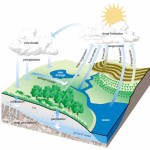
Hydrologic Cycle
Percolation. This may be new rainwater term to most homeowners, but it is a term and activity that we need to embrace. Simply put, it refers to keeping rainwater on the land and letting it flow into the ground, ultimately replenishing ground water.
An inch of rain falling on about 1600 square feet of rooftop will produce about 1,000 gallons of run-off. Capturing this water on the property at the start and end of the rainy season will lessen irrigation needs and help plants cope with drought conditions.
Capturing water during the peak rain fall times should saturate the land, but may be too much of a good thing as water could pool in the crawl space under the house causing mold and mildew.
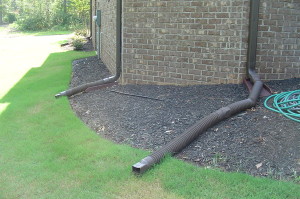
Downspout extension.
Most suburban homes have downspouts from roof gutters that are directly connected to solid wall drainage pipes that allow water to flow directly to the street. The idea is to quickly get the water away from the house.
However in a drought situation, we need to keep as much water as possible on the property, but away from the house. The question is how.
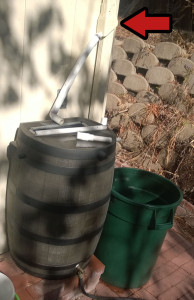
Divert water to rain barrel.
The simplest way is to have water flow from the downspout directly onto the land. This is great at the beginning and end of the rainy season. Not so good during deluges.
Here are a couple of ways to resolve this issue.
- Install an Oatey Mystic Rainwater Collection System diverter onto all of your downspouts, or at least the ones that drain the largest sections of your roof.
- You might already use this system to divert rain water into a water barrel. This is a cleaver device that diverts water flowing down the sides of the downspout into a short 1” diversion pipe while allowing large flows to flow down the center of the downspout.
- Attach a 1.25” sump-pump hose to the diversion pipe and run the hose away from the house. You can get the Oatey diverter from Amazon for about $15; Home Depot sells 20’ of sump pump hose for about $10.
A more extensive solution is to install a mechanism to divert all of the rainwater that flows into your closed wall piping. This is done by installing a Tee coupling and gate valve into the closed pipe, this will allow you to divert all of the water to the second pipe.
-
At the Tee location, dig a trench deep enough to allow water to flow into a perforated pipe and onto your property. The trench should be filled with crushed rock to allow dispersal of the water.
- A second gate valve should be installed near the Tee to control flow into the perforated pipe to be used during the peak rain times to divert all of the water to the street.
- Currently the irrigation pipe industry does not make an inexpensive 4” gate valve, but they should.
Rockler, a wood worker tool company does have a gate valve, designed to be used in dust collection systems, which can be used. It is slightly larger than the 4” drainage pipe (about 1/16”) but this can be solved with duct tape or pipe tape (also available at Home Depot). This option is very similar to the swale built last year, just in another application with less active participation by the owner.
There is an active participation part by the homeowner with this method. During periods of heavy rainfall, water can back-up into the downspout and overflow the gutter if the ground is already saturated. So partially opening the gate valve to the street helps alleviate the high flows you may experience.
Another example, as seen on Youtube, is from “Vegan Athlete” who built this impressive setup in Arizona. Video is about 7 minutes long.
Why should you go through all this work? Because we need to recharge the groundwater and promote less water flowing to the street. Plus, the ways shown above reduced pollution to our waterways. We need to capture and use the water where it falls. Soil with a higher moisture content is better for the plants that surround us and reduces are needs to run the sprinklers during the summer.
These are just a few examples that you can do at home, please share in the comments things you have done to capture rainwater at home.

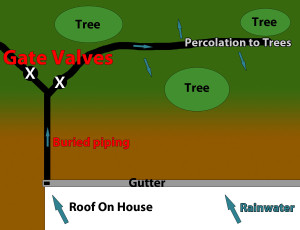
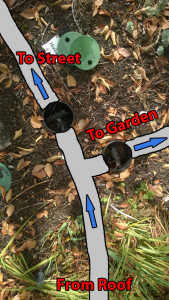
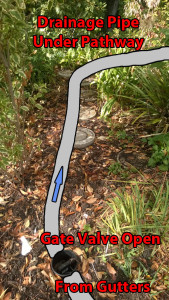


This is so important. I hope we can all find a way to store rain water.